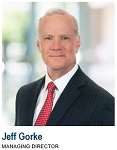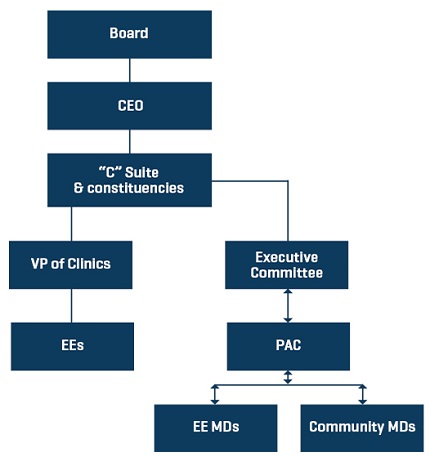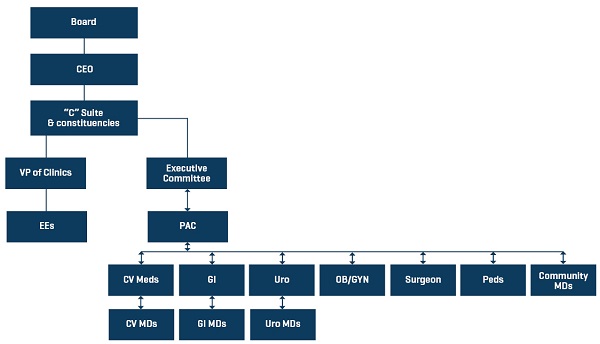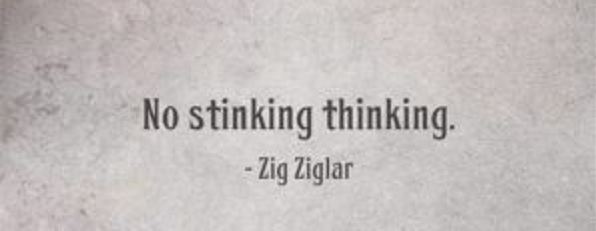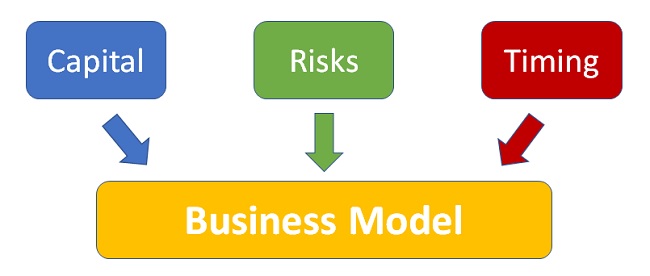

A physician who I greatly admire and respect once took a job as a hospitalist in a small town. She was told that she would have a guaranteed salary. But she did not read the fine print in her employment contract. The guarantee was actually an advance against future production, or collections. She was required to meet a certain level of collections to support her salary. If she did not meet that level of collections, she had to pay back the deficit. There was a hospitalist outside of and competing with her group. One of the emergency department physicians really liked this hospitalist. If he determined that the patient had good insurance, he called the outside hospitalist to do the admission. If he determined that the patient did not have good insurance, he called my friend’s hospitalist group. They were providing a tremendous amount of care to the patients in the hospital. They were just not getting paid. The longer she worked there, the deeper in debt she was getting. One of her partners did the math and simply left. My friend stayed out of a sense of integrity and fairness to give them time to find her replacement. She was not repaid in kind. And who was going to come and take over for such a terrible deal? She ended up in court and had to pay everything that the hospital was demanding of her. The judge said that it was a terrible contract, but a legally binding one and that she was a big girl and should have read the contract. Her partner who left early made the right decision in that she paid much less to the hospital.
When I was in medical school, we had a medical legal course which consisted of about 10 hours of lectures. One of the things that we were told was to read very carefully anything that we put our signature to. We were particularly cautioned to read employment contracts. I have followed this advice, and it has served me very well. I know of some stories where physicians were badly injured for not having read their employment contracts.
The first question is, “Will I be paid as an employee or as a contractor?” If an employee, then the employer pays half of the Social Security and Medicare taxes. If a contractor, then you pay all of the Social Security and Medicare taxes. If paid a salary, you will get a set amount of money, usually every two weeks or every month. Most people who are paid a salary are expected to work significantly more than 40 hours per week, because there is no additional cost to the employer for extra hours that you work. Many job offers will sound like salaried positions, but close examination of the contract will reveal that all or a significant portion of the payment offered is contingent upon one or more performance metrics. These metrics may include collections, relative value units (RVU’s), quality & efficiency. These may be based on individual performance, group performance or some combination of both. Collections is how much was actually paid for the care you delivered. Usually, a percentage of your collections is paid to the group or hospital for overhead. RVU payment is based not on collections, but on billing. This system is often used by organizations that serve the underserved as it encourages physicians to deliver care regardless of an individual’s ability to pay. Increasingly large portions of physicians’ compensation packages are only paid if the individual and/or group meet certain quality and efficiency metrics. Whether you are actually in control of a metric, the manner in which the metric is tracked & calculated and the thresholds to qualify for the metric all can have significant impact on your actual compensation. Benefit packages can also have significant impact.
In such a short article, I cannot tell you everything to look for. I would advise you to look closely at the exit clauses. When you go to work for a new employer, you have great hopes and even expectations that things are going to go very well. But they may not. I heard of a physician who, within two months of joining a new group, learned that his partners were engaged in and engaging him in activity of questionable legality. The exit clauses in his contract were onerous, and it was very costly for him to leave so early. Issues that may hit you with early separation can include repayment of sign-on bonuses, repayment of moving stipends and noncompete clauses. I was once invited to sign a contract that said I could not work for two years in any hospital anywhere in the United States owned by any company or organization that had a contract with this large physician staffing company (which had hospital contracts in many states).
So how do you go about reading an employment contract? Of course, you are not going to receive a copy of the contract until after you have been given an offer of employment. The contract is usually sent as a PDF. You can either print it out and use a highlighter and an ink pen or, if you can get it into an editable format on your computer, you can go through the document using track changes. You are now going to sit down and read every single word of the document: slowly, carefully and thoughtfully. You will go online and look up the definitions of any legal terms that you do not understand. You can write those definitions in the margins. You can make notes about things that you understand and want addressed and about things that you do not understand. After fully digesting the document, you will either decide to walk away from this job or you will think that this might be doable if the potential employer is agreeable to reasonable changes.
If you wish to go forward, you will now hire an experienced physician employment attorney and will send him or her a copy of your highlighted document with all its notations. You will discuss your concerns. Your attorney will review your document and schedule a follow-up discussion. Your attorney may advise you simply to walk away. Or he may give you a list of items that need clarification or correction. Some issues you identify and some of your attorney’s recommendations will be deal breakers meaning either these changes are made, or you refuse the offer of employment. Others may be that it would be nice if you could get them, but are not that important. With the help of your attorney and your spouse or significant other, if there is one, you will formulate a plan for seeking necessary and desired changes in your employment contract that are reasonable and fair to both parties. Your attorney will help you express your concerns in a language that resonates with the attorney working for your potential employer who will have to give the final approval on any changes to the employment contract.
I will walk you through how I approach these negotiations. I schedule a phone meeting with the individual designated by the potential employer to be their face for the negotiations. My tone is very pleasant and reasonable. I start by saying that my wife and I have carefully read the contract. I have sought the advice of a very competent attorney experienced in physician employment contracts. From these discussions, the following concerns have arisen. If the concern is coming from me, I do not hesitate to say so, but I consider it a good strategy to point out when the concern is coming from my wife or from the advice of my attorney. This is called an appeal to higher authority. It may seem like weakness, but it is a very powerful tool. Used properly, it can tremendously strengthen your position as nothing they say to persuade me will have any impact on how my wife feels about it, especially when it is an issue that is recognized as a reasonable concern for the employee’s wife. When appropriate, I ask for clarification of language in the contract rather than outright changes. Everything that I am asking for needs to be laid out in this first meeting. If you keep coming back with new demands, they may tire very quickly and look for another candidate.
You likely will not get everything you ask for. Just make sure that you get everything you need.
You likely will not get everything you ask for. Just make sure that you get everything you need.Connect with us on LinkedIn, join our Active Network Program and look at the other areas of connection we offer.


